What to see in Lecce: 10 places to discover ancient Lupiae
Lecce, located in the center of Salento, is a city that surprises visitors with its artistic, cultural and historical richness. Known as the capital of Apulian Baroque, it embodies a fusion of Roman heritage (a time when it was known as Lupiae), medieval influence and Baroque architecture, which together give the city a rare beauty. Walking through its narrow streets paved with typical Lecce stone, one is immersed in a past witnessed by churches, palaces and monuments of different styles and eras.
Lecce Baroque, characterized by rich decoration and expert use of local stone, makes Lecce an open-air museum. However, the city also offers an active cultural life with a welcome typical of southern Italy, enriched by the country’s characteristic gastronomy. Visitors will never run out of visual stimuli or sensory experiences ranging from taste to Mediterranean scents. With its historic cafes, ancient ruins and artisan workshops, Lecce invites a contemplative tour of its streets, where every step tells a story and every building reveals a secret. In this itinerary, we will discover the 10 must-see places in the city, from the ancient heart to the Baroque testimonies, without forgetting the spaces that tell of the daily life of a city that has been able to preserve its identity through the centuries.
1. Cathedral Square
The Cathedral Square is one of the best-known places in Lecce. In stark contrast to the liveliness of St. Oronzo Square, Cathedral Square represents a more intimate and cozy space, enclosed on three sides by the buildings that delimit it: the Cathedral, the Bell Tower, theEpiscope and the Seminary Palace. The main facade of the Cathedral, a work of art of Lecce Baroque, is an imposing and richly decorated structure. The Cathedral of Lecce, dedicated to Santa Maria Assunta, was first built in 1144, but underwent several alterations over the centuries, most recently by architect Giuseppe Zimbalo in the 17th century. The interior features a main nave flanked by two side aisles, with fine works of art such as the wooden choir and numerous altarpieces. Another highlight is the bell tower about 70 meters high, from which one can enjoy the view of the city and the surrounding countryside.
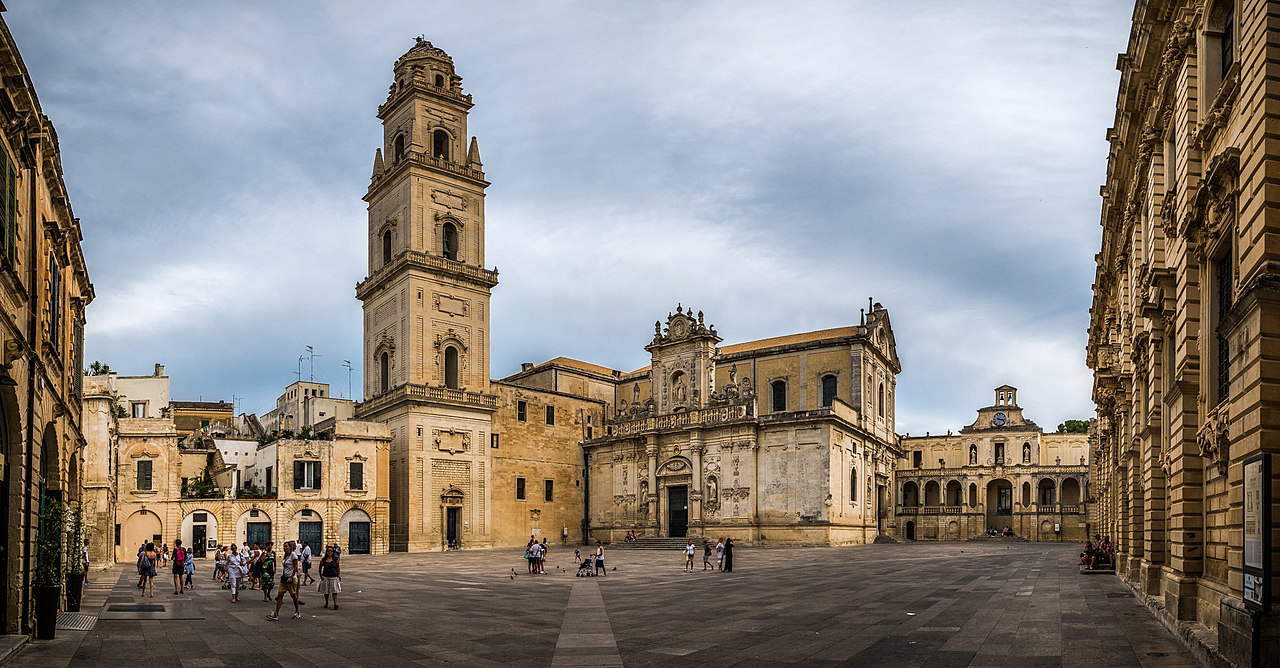
2. The Roman Amphitheater
Located in the city center, Lecce’sRoman Amphitheater represents one of the symbols of ancient Lupiae, the city’s Roman name. Dating back to the 1st-2nd centuries AD, the amphitheater was accidentally discovered in the early 20th century during construction work. Only part of the structure is visible, as the rest lies beneath the modern buildings surrounding it. Originally, it could seat more than 20,000 people. The amphitheater was mainly used for gladiator shows and other forms of public entertainment. Today, it is one of the most visited attractions in the city, blending seamlessly with the modern life around it. During the summer months, the amphitheater hosts cultural events, concerts and plays, creating a link between the ancient and the contemporary that captivates visitors.
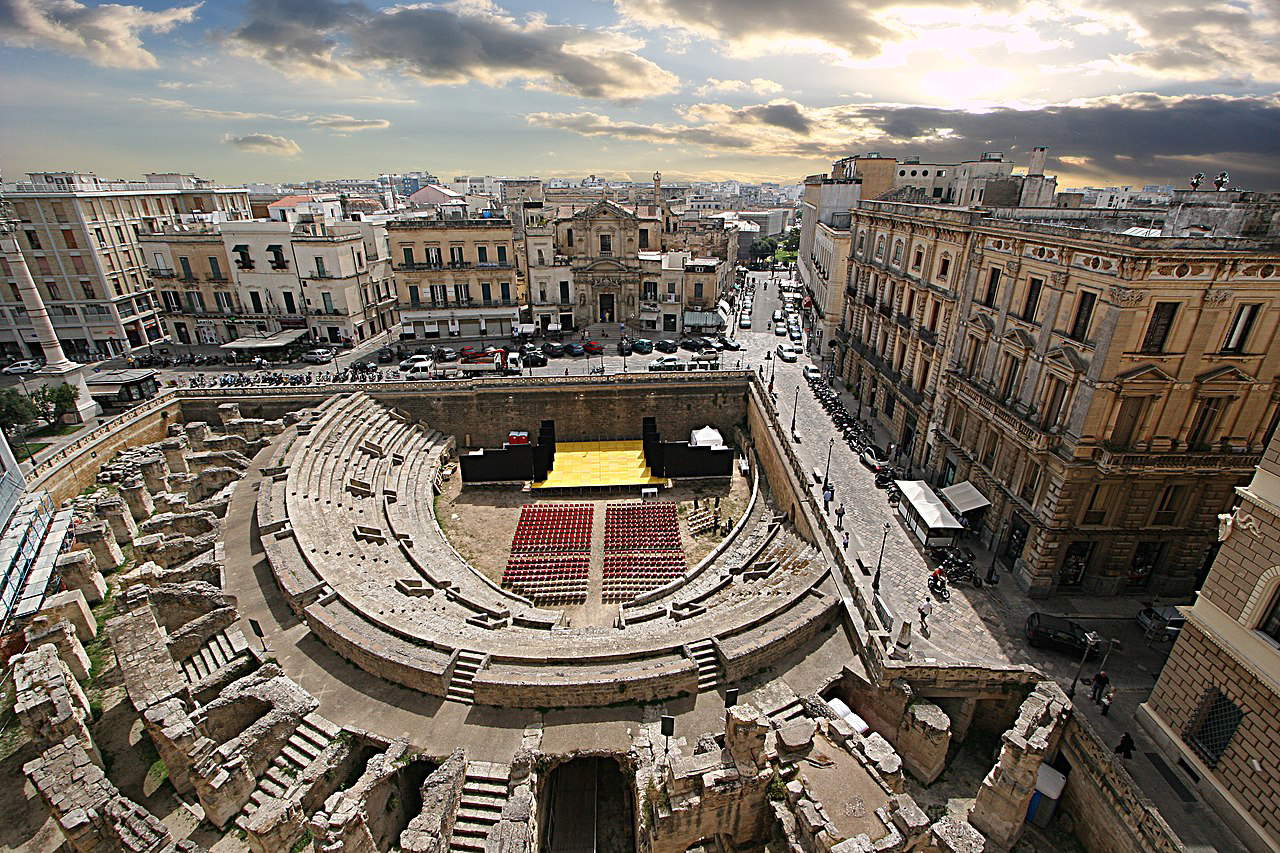
3. Basilica of Santa Croce
The Basilica of Santa Croce is perhaps the most emblematic monument of Lecce Baroque, a work that embodies the very essence of this decorative style. Built between 1549 and 1646, the basilica is known for its façade, an ensemble of sculptures and details that create a complex play of light and shadow. The columns, capitals, and floral ornaments combine to create a work of cohesion and refinement, with a large rose window in the center that dominates the entire architectural complex. The interior, more restrained than the facade, nevertheless has details of great interest, such as the side chapels and decorations. The basilica is part of a larger complex that includes the former Convent of the Celestines, now the seat of the Prefecture. The Basilica, an example of sacred architecture, is the result of the work of several artists and architects including Gabriele Riccardi and Francesco Antonio Zimbalo, who were able to interpret Lecce Baroque in an unparalleled way.
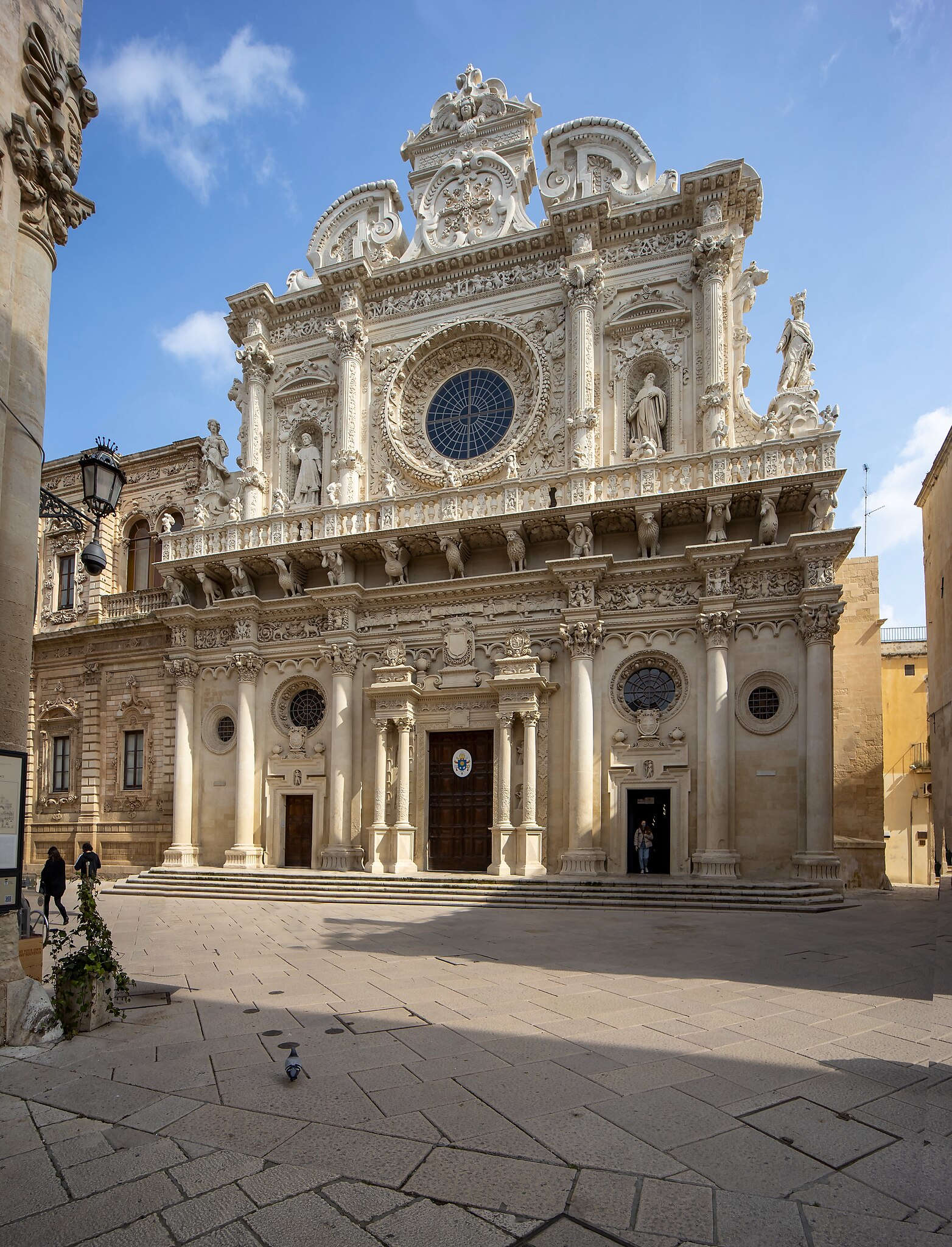
4. St. Oronzo Square
St. Oronzo Square is the heart of the city of Salento, an urban space named after the city’s patron saint, St. Oronzo, whose statue sits atop a Roman column that, according to one theory, was donated by the city of Brindisi. The monument, erected in 1666 and 1683 from to thank the saint for his intercession during the plague, is now one of Lecce’s most recognizable symbols. The square is surrounded by historic buildings, including the Palazzo del Seggio, also known as the “Sedile,” an elegant structure in Gothic-Renaissance style built by architect Alessandro Saponaro in 1592, and the 14th-century Church of Santa Maria della Grazia. In addition, there is a portion of theRoman amphitheater that emerges in the modern context of the square and manages to create a fascinating contrast between antiquity and the present day.
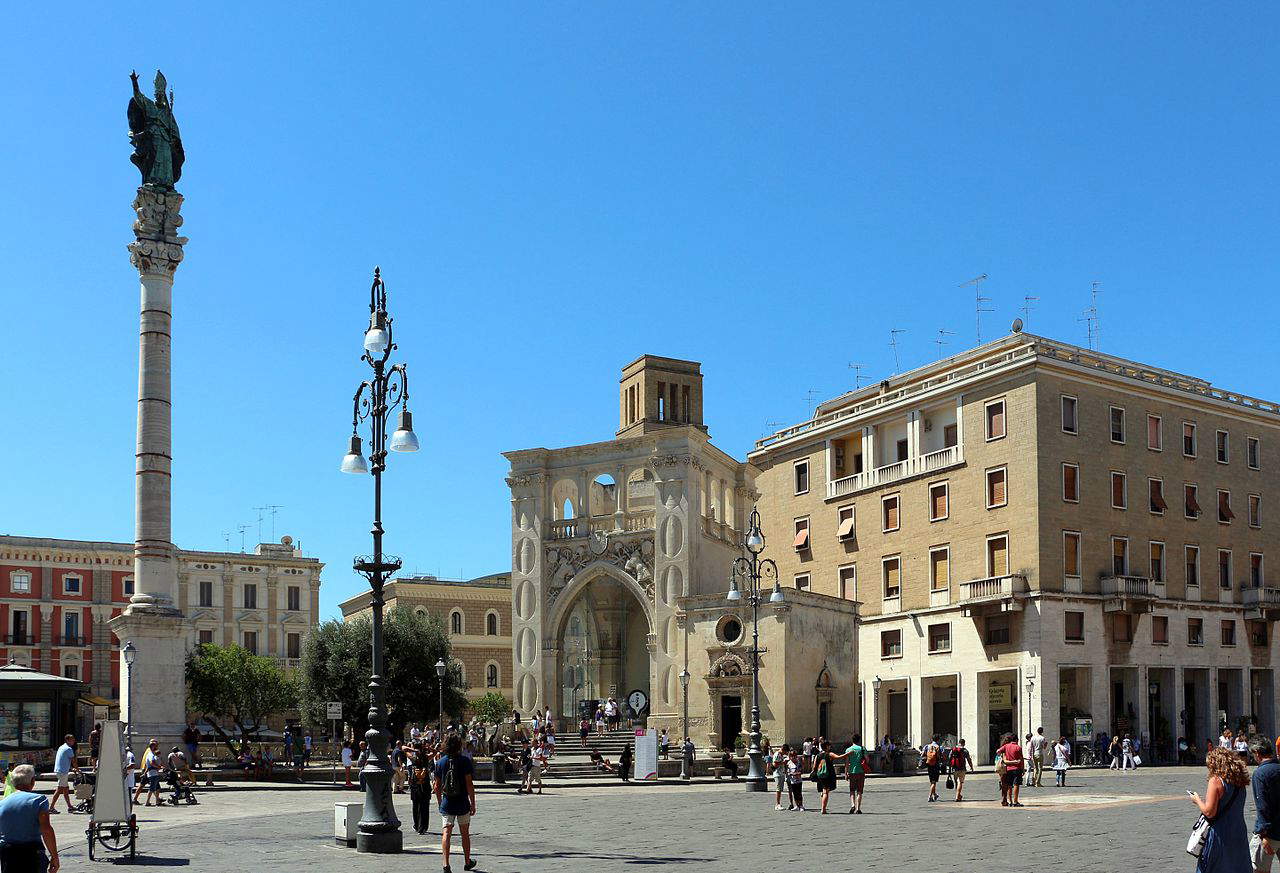
5. The Castle of Charles V
The Castle of Charles V is one of Lecce’s most impressive buildings, a witness to the city’s military and defensive history. Built at the behest of Emperor Charles V of Habsburg in 1539, the castle was designed by Gian Giacomo dell’Acaya, one of the most famous military architects of the Renaissance. The structure, with its strong walls and corner bastions, served to protect the city from Turkish raids and other external threats. Today, the castle hosts temporary and permanent exhibitions, as well as being home to the Papier-mâché Museum, a typical art of Salento. Its interior rooms, once reserved for nobles and soldiers, now welcome tourists and the curious and a window into the history of the city and its evolution. The outdoor spaces, with their large courtyard, are also used for cultural events and performances.
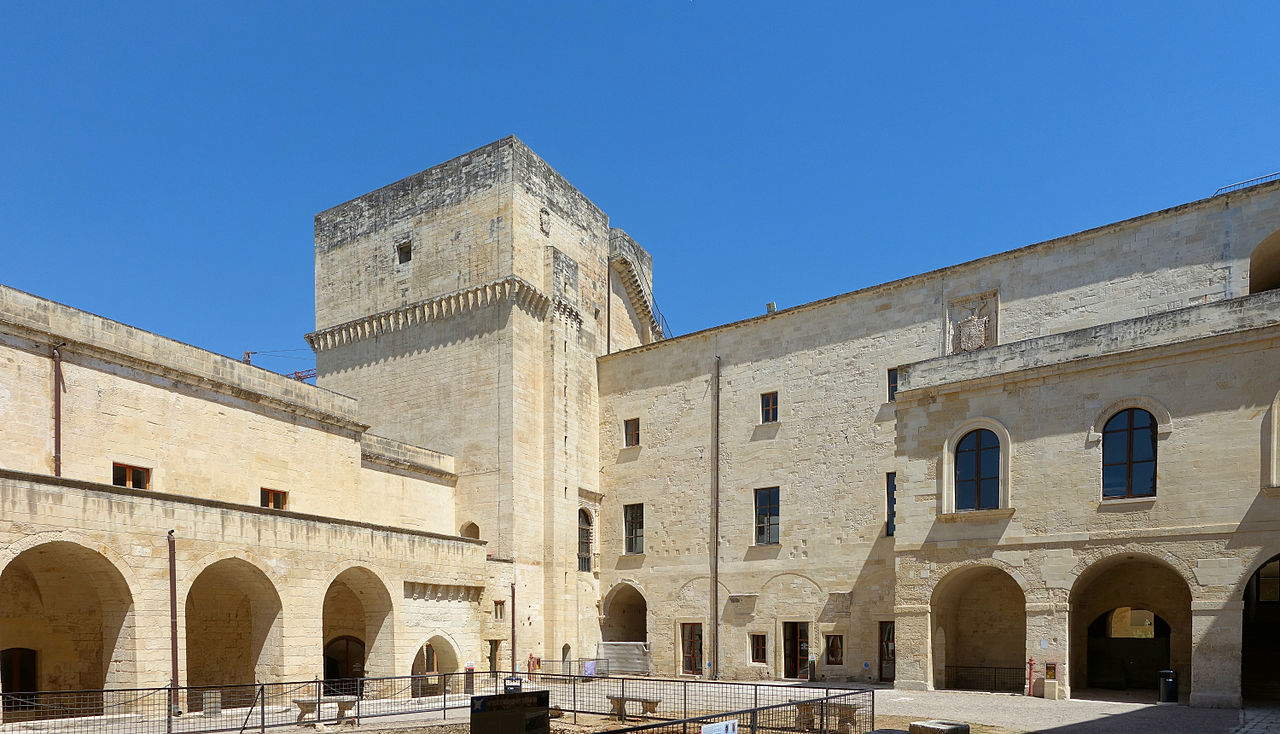
6. The Faggiano Museum
An entirely unique case, the Faggiano Museum is a recent discovery that offers an in-depth look at Lecce’s historical stratification. The building, located in an ancient dwelling, hides under its floor a series of artifacts that tell the story of the city from the Messapian era to the Middle Ages. The house, owned by the Faggiano family, was excavated in 2001 due to a plumbing problem, but what emerged was much more than a simple household repair. The museum displays an incredible collection of artifacts, tombs, and ancient architectural structures, including a probably Messapian floor and a water cistern, which testify to the daily use of the rooms in centuries past. Indeed, the uniqueness of the place lies in the narrative of a fortuitous discovery that transformed an ordinary house into an archaeological museum.
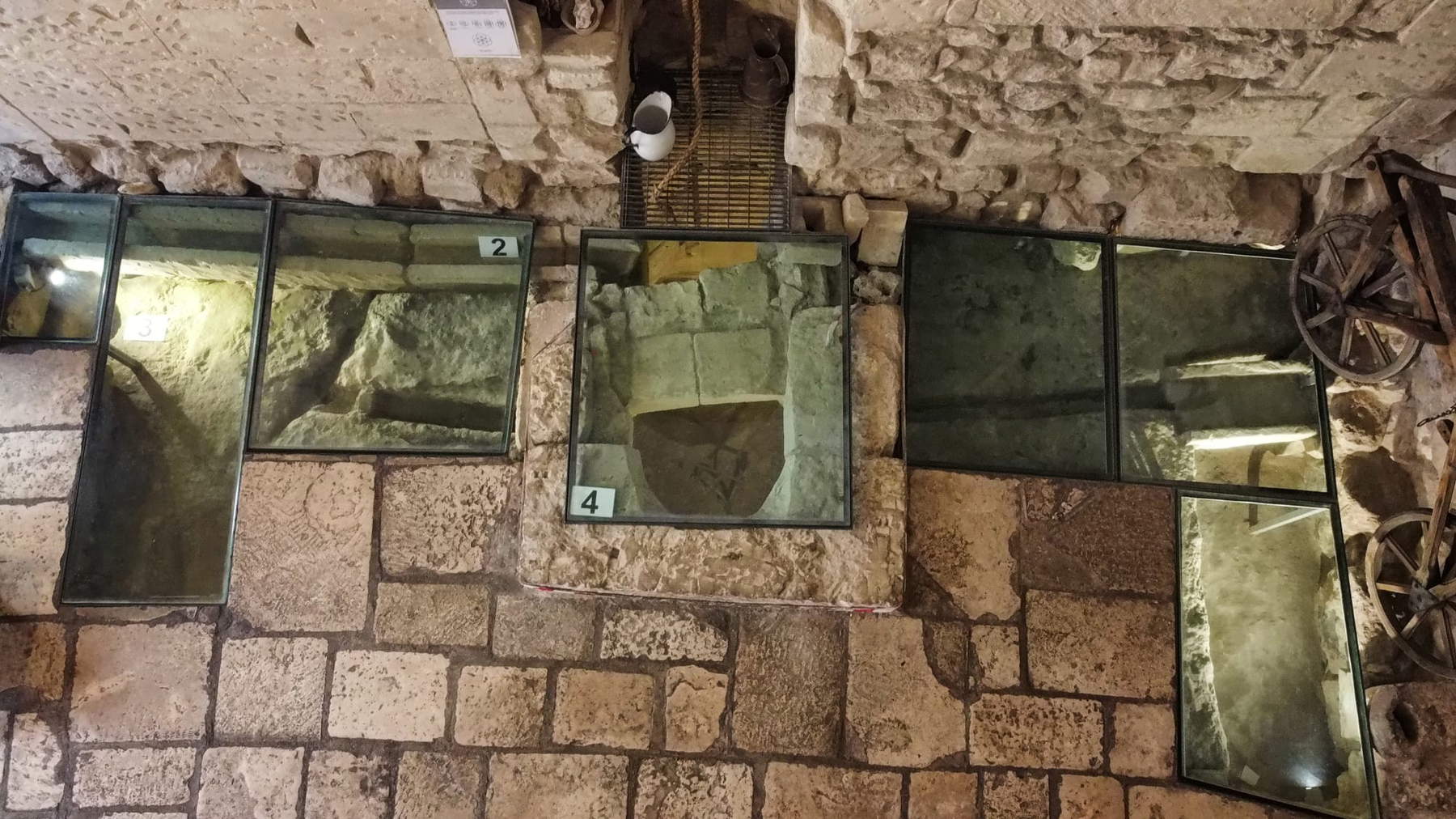
7. The church of San Matteo
The church of San Matteo, built between 1667 and 1700, represents one of the most interesting examples of Baroque architecture in Lecce. Located in the historic center, the church strikes the visitor with its convex facade, which clearly recalls the style of Borromini. The structure is distinguished from other churches in Lecce by its elliptical plan, which creates an effect of dynamism and movement both outside and inside. The interior of the church, decorated with gilded stucco and 17th-century paintings, reflects the opulent taste of the Baroque, but also retains a dimension of recollection and sacredness. Of particular interest is the contrast between the two columns at the entrance: one carved with fine detail, the other remaining rough, a symbol of human imperfection.
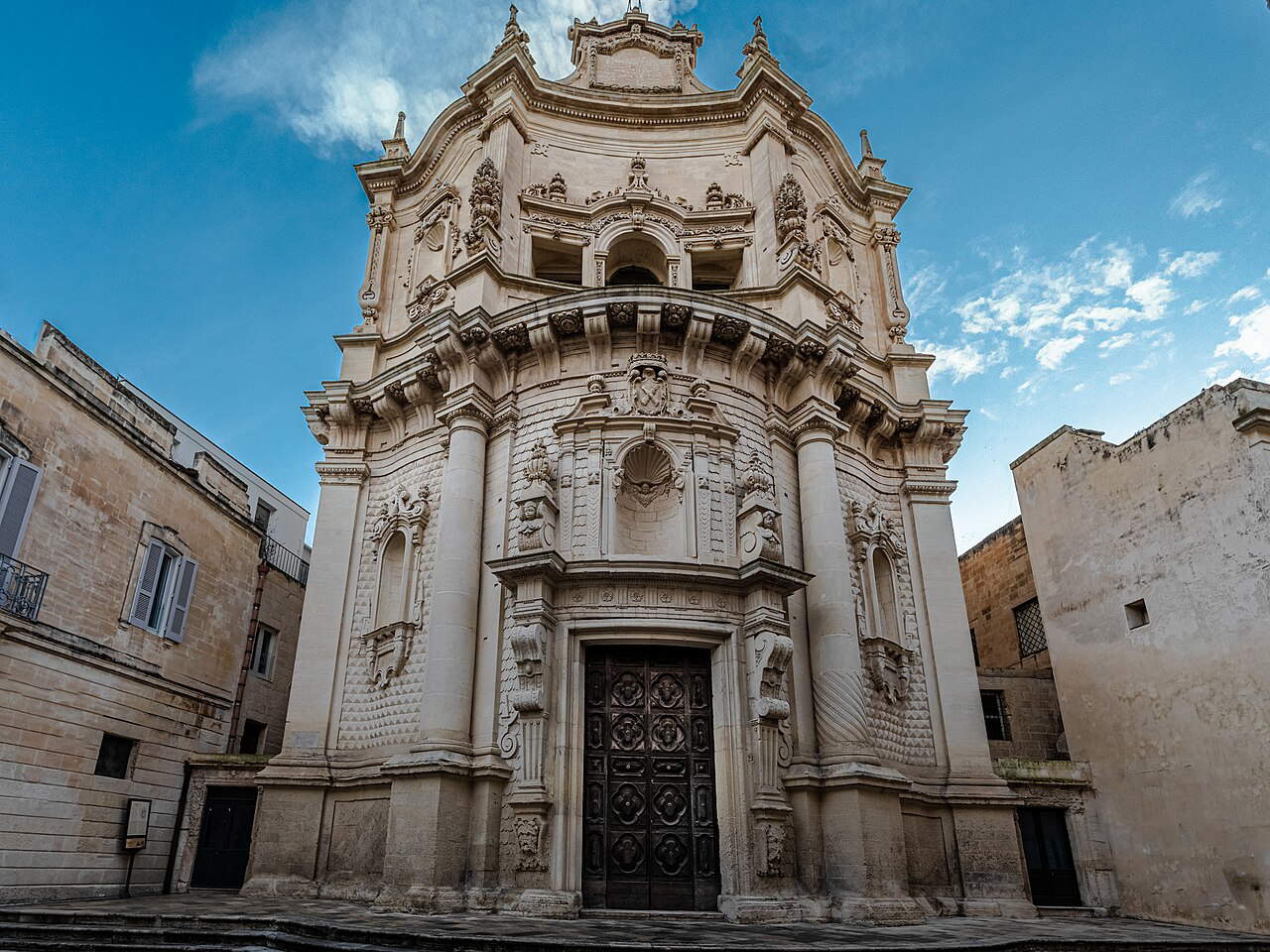
8. The church of Santa Chiara
The church of Santa Chiara is one of the most representative examples of Baroque religious architecture in Lecce. Founded in 1429, and then renovated between 1687 and 1691 to a design by architect Giuseppe Cino, the church stands out for its sober and harmonious elegance. The facade, in Lecce stone, is decorated with floral and geometric elements typical of Salento Baroque, but what makes this church truly special is its octagonal plan, a rare element in churches of the period. The interior, also richly decorated, features stone side altars, magnificent gilded altars and a papier-mâché ceiling decorated with depictions of angels and saints designed by Mauro Manieri . The church is home to the order of the Poor Clares and is located in the vicinity of the Monastery of St. Clare, a place that, until the 19th century, was strictly reserved for women’s monastic life. Its intimate atmosphere and small size make this church a must-see for those who want to discover a more intimate side of Baroque Lecce.
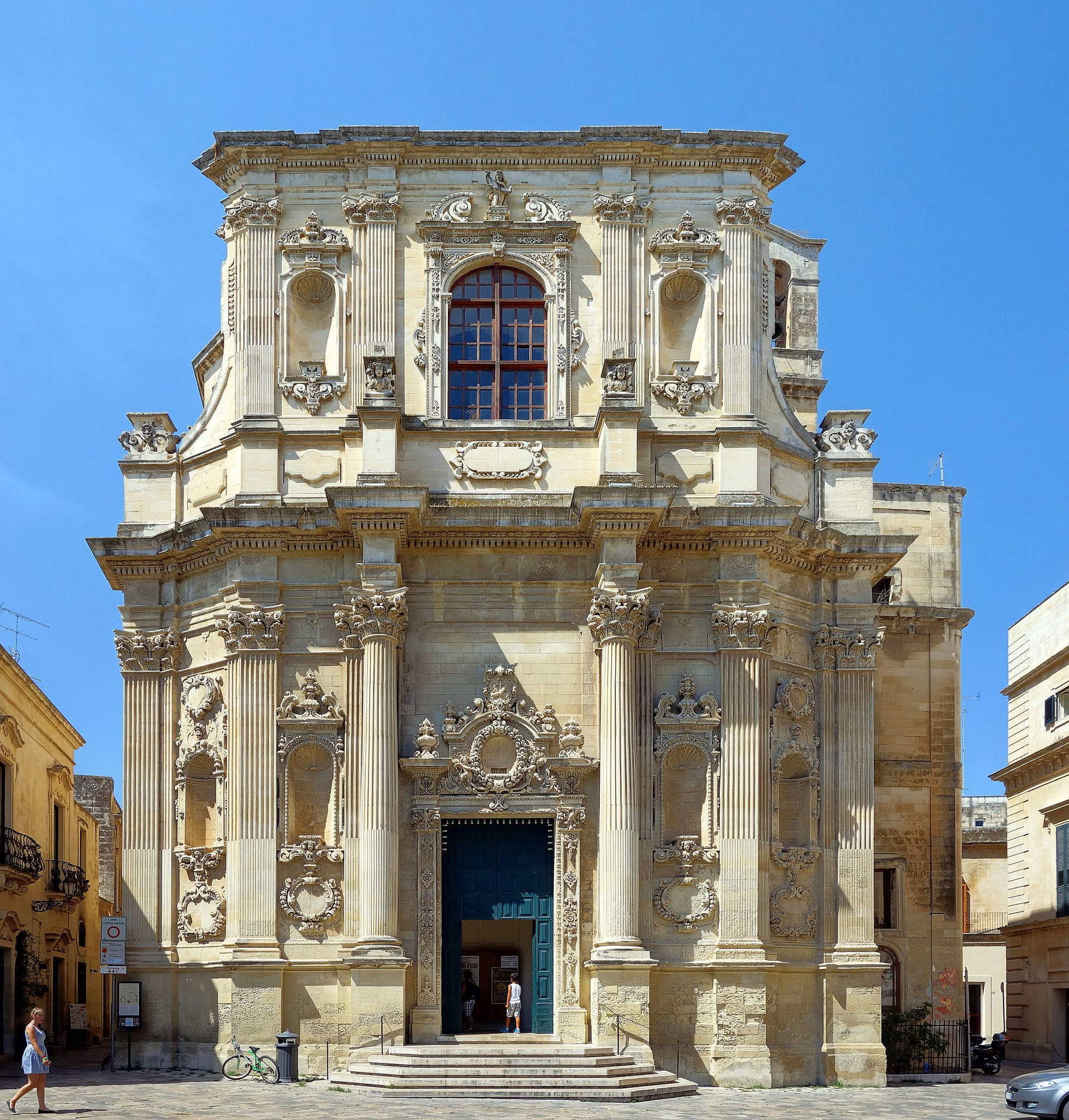
9. The Roman Theater
The Roman Theater in Lecce is one of the most fascinating remnants of the city’s Roman era. Accidentally discovered in 1929, the theater probably dates back to the second century AD although its dating is still uncertain and is partly hewn from local stone. Unlike the amphitheater, the theater was used for theatrical and musical performances, accommodating up to 5,000 spectators. Today, the theater is only partially visible, as part of the structure is hidden under modern buildings, but what remains nonetheless offers an evocative record of cultural and social life in ancient Lupiae. During the summer months, the theater hosts events and performances, creating a unique atmosphere where the past and present meet. In addition, in the vicinity of the site, it is possible to visit the Roman Theater Museum, which collects artifacts and evidence related to Roman times.
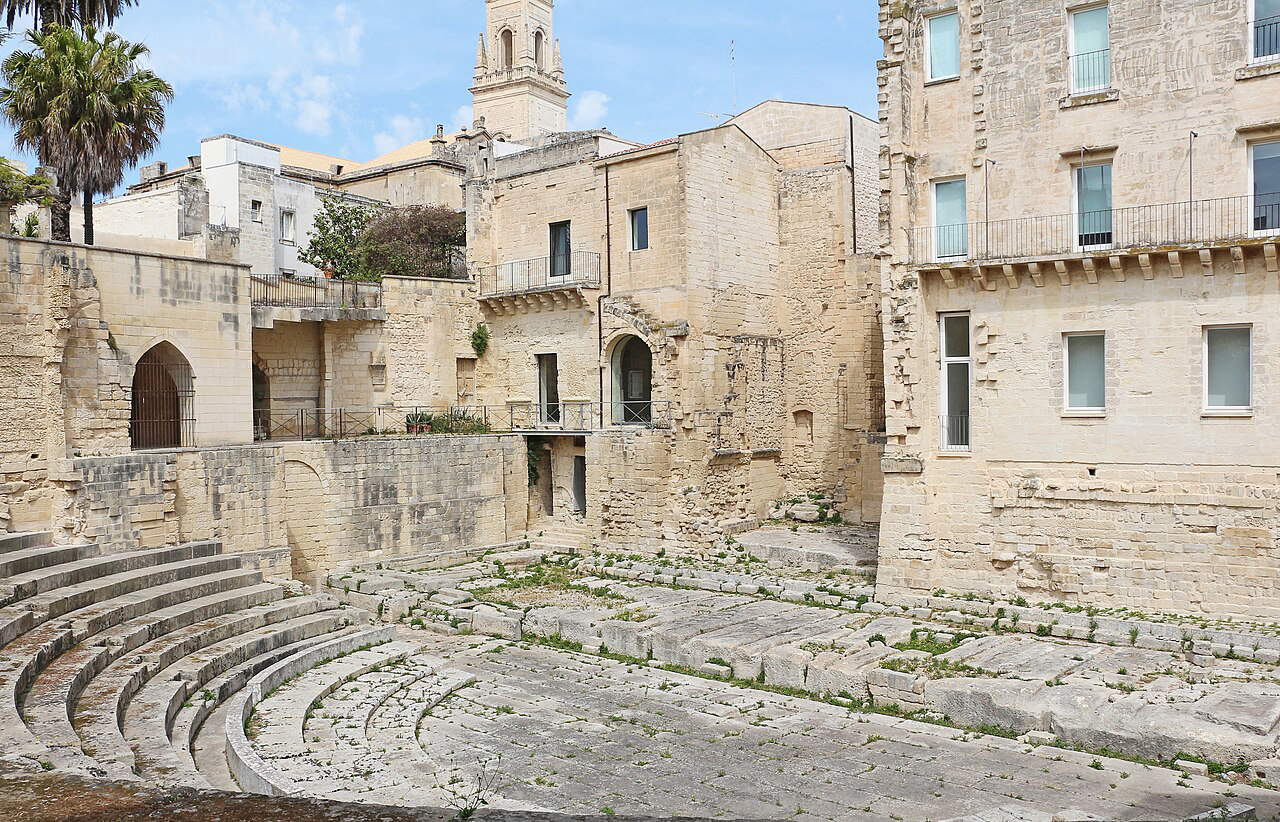
10. Provincial Museum Sigismondo Castromediano
The Provincial Museum Sigismondo Castromediano is the oldest museum in Puglia, founded in 1868 at the behest of the duke, patron and intellectual of the same name. The museum houses a vast archaeological collection ranging from the Bronze Age to Roman times, with a section dedicated to the Messapic civilization, which includes artifacts from excavations in ancient Rudiae, not far from Lecce. Among the most important pieces are decorated vases, marble sculptures, and mosaics. In addition to the archaeological section, the museum includes a rich picture gallery displaying works of art from the Middle Ages to the 20th century, including paintings by Apulian and Italian artists. The Castromediano Museum is an invaluable place for those who wish to fully understand the historical and cultural roots of the city and the Salento area.
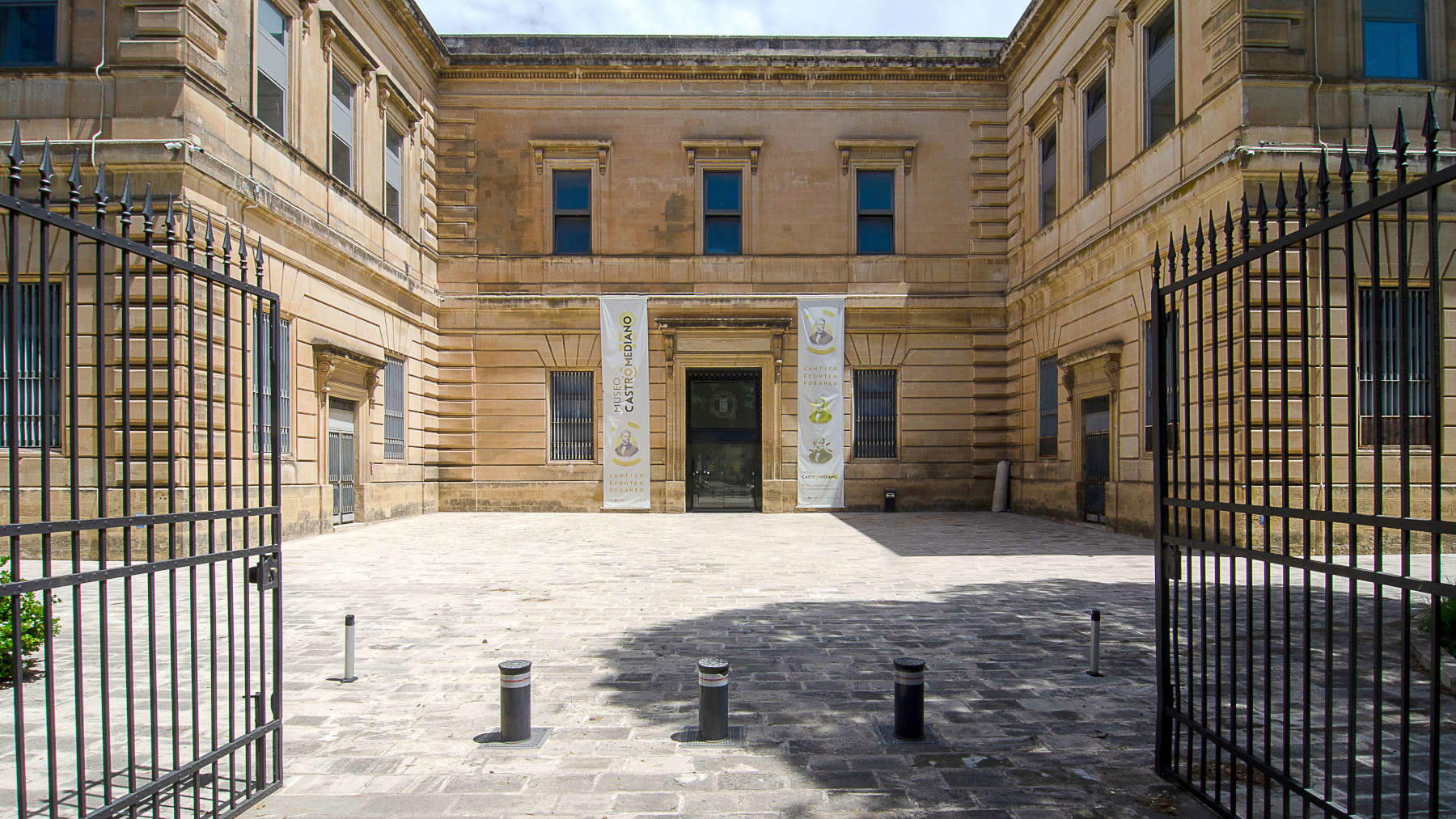
 |
| What to see in Lecce: 10 places to discover ancient Lupiae |
Warning: the translation into English of the original Italian article was created using automatic tools. We undertake to review all articles, but we do not guarantee the total absence of inaccuracies in the translation due to the program. You can find the original by clicking on the ITA button. If you find any mistake,please contact us.


























